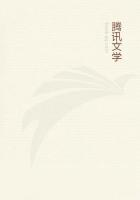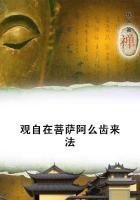Origin of the Empire (A.D.1316)
Muhammad's capture of Kampli and Anegundi --Death of his nephew Baha-ud-din --Malik Naib made governor of Anegundi --Disturbances --Harihara Deva Raya raised to be king of Anegundi --Madhavacharya Vidyaranya --The city of Vijayanagar founded --Legends as to the origin of the new kingdom.
The city of Vijayanagar is,as already stated,generally supposed to have been founded in the year 1336,and that that date is not far from the truth may be gathered from two facts.Firstly,there is extant an inion of the earliest real king,Harihara I.or Hariyappa,the "Haraib"of Ibn Batuta,[23]dated in A.D.1340.Secondly,the account given by that writer of a raid southwards by Muhammad Taghlaq tallies at almost all points with the story given at the beginning of the Chronicle of Nuniz,and this raid took place in 1334.[24]
For if a comparison is made between the narrative of Batuta and the traditional account given by Nuniz as to the events that preceded and led to the foundation of Vijayanagar,little doubt will remain in the mind that both relate to the same event.According to Ibn Batuta,[25]
Sultan Muhammad marched southwards against his rebel nephew,Baha-ud-din Gushtasp,who had fled to the protection of the "Rai of Kambila,"or "Kampila"as Firishtah calls the place,in his stronghold amongst the mountains.The title "Rai"unmistakably points to the Kanarese country,where the form "Raya"is used for "Rajah;"while in "Kambila"or "Kampila"we recognise the old town of Kampli,a fortified place about eight miles east of Anegundi,which was the citadel of the predecessors of the kings of Vijayanagar.Though not itself actually "amongst the mountains,"Kampli is backed by the mass of rocky hills in the centre of which the great city was afterwards situated.It is highly natural to suppose that the "Rai,"when attacked by the Sultan,would have quitted Kampli and taken refuge in the fortified heights of Anegundi,where he could defend himself with far greater chance of success than at the former place;and this would account for the difference in the names given by the two chroniclers.Ibn Batuta goes on to say that the Raya sent his guest safely away to a neighbouring chief,probably the Hoysala Ballala,king of Dvarasamudra in Maisur,then residing at Tanur.He caused a huge fire to be lit on which his wives and the wives of his nobles,ministers,and principal men immolated themselves,and this done he sallied forth with his followers to meet the invaders,and was slain.The town was taken,"and eleven sons of the Rai were made prisoners and carried to the Sultan,who made them all Mussalmans."After the fall of the place the Sultan "treated the king's sons with great honour,as much for their illustrious birth as for his admiration of the conduct of their father;"and Batuta adds that he himself became intimately acquainted with one of these --"we were companions and friends."There are only two substantial points of difference between this story and the traditional Hindu account given by Nuniz.One of these concerns the reason for the Sultan's attack.According to the Hindus it was a war undertaken from pure greed of conquest;according to Muhammadan story it was a campaign against a rebel.The second is that while the Hindus declare that none of the blood royal escaped,Batuta distinctly mentions the survival of eleven sons,and proves his point incontestably.But this does not vitiate the general resemblance of the two accounts,while the synchronism of the dates renders it impossible to believe that they can refer to two separate events.We may suppose that since the eleven sons became followers of Islam they were for ever blotted out of account to the orthodox Hindu.
After the capture of the fortress the Sultan,according to Ibn Batuta,pursued Baha-ud-din southwards and arrived near the city of the prince with whom he had taken refuge.The chief abandoned his guest to the tender mercies of the tyrant,by whom he was condemned to a death of fiendish barbarity.
"The Sultan ordered the prisoner to be taken to the women his relations,and these insulted him and spat upon him.Then he ordered him to be skinned alive,and as his skin was torn off his flesh was cooked with rice.Some was sent to his children and his wife,and the remainder was put into a great dish and given to the elephants to eat,but they would not touch it.The Sultan ordered his skin to be stuffed with straw,to be placed along with the remains of Bahadur Bura,[26]and to be exhibited through the country."To continue briefly the story given by Nuniz.After the capture of Anegundi in 1334the Sultan left Malik Naib (whom Nuniz calls "Enybiquymelly"in his second chapter,and "Mileque neby,""Meliquy niby,"and "Melinebiquy"in the third)as his local governor,and retired northwards.The country rose against the usurpers,and after a time the Sultan restored the principality to the Hindus,but made a new departure by raising to be Raya the former chief minister Deva Raya,called "Deorao"or "Dehorao"by Nuniz.He reigned seven years.During his reign this chief was one day hunting amongst the mountains south of the river when a hare,instead of fleeing from his dogs,flew at them and bit them.[27]The king,astonished at this marvel,was returning homewards lost in meditation,when he met on the river-bank the sage Madhavacharya,surnamed VIDYARANYA or "Forest of Learning,"--for so we learn from other sources to name the anchorite alluded to --who advised the chief to found a city on the spot."And so the king did,and on that very day began work on his houses,and he enclosed the city round about;and that done,he left Nagumdym,and soon filled the new city with people.And he gave it the name VYDIAJUNA,for so the hermit called himself who had bidden him construct it."[28]
Thus,in or about the year A.D.1336,sprung into existence the great city which afterwards became so magnificent and of such wide-spread fame.















